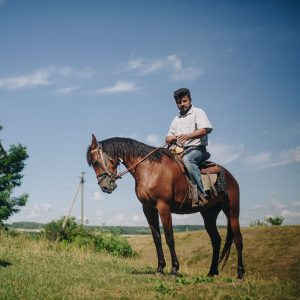A few years ago in the village Ivkivtsi hidden from the passers-by over the hills near Cherkasy, the locals transformed a former Soviet collective farm into agricultural attraction Grainland. Grainland aims to not only entertain visitors but also display antique Ukrainian household objects and other specific crafts. The complex includes an ethnographic museum, a smithy, an inkwell shop, a rag doll workshop, a weaving workshop, a papermill and a pottery. All the exhibits are interactive, and you can play folk games and visit a windmill that is over a hundred years old.
Nazar Lavrinenko, the founder of Grainland, was born in Ivkivtsi. He states that earlier this region was heavily populated and had about 500 houses. However, no more than a hundred people live here now.
The area has always attracted travelers because of a mystical mound, Semydubova Mountain, located near the village. The locals speculate that the Cossacks re-buried the ashes of Bohdan Khmelnytsky within its bowels. Given the proximity of Ivkivtsi to the hetman’s capital – Chyhyryn (28 km away – ed.), the hypothesis is not unfounded nor has it been verified.
The restored mill
In the village there is a windmill that is over a hundred years old. Built in 1906 by the craftsman Oksentiy Odynets and named after him, Odyntsivsky Mill survived World War II and operated until 1969. At the beginning of the 20th century, there were 27 windmills in Ivkivtsi, and milling, that is, grain processing, was the main economic activity in the region.

In 2008, Nazar Lavrinenko and a group of other Ivkivtsi residents decided to restore Odyntsivsky Mill. The structure’s renovations included both the exterior and the interior, though the original rotary mechanism and frame were preserved. Now the mill is open to tourists.
Nazar is a historian and ethnographer by profession and has always been interested in windmills. He is the chairman of the Ukrainian Milling Association. He says that the first windmills appeared in Ukraine in the 16th century, while various threshing techniques were practiced since the Neolithic Age. But over the past decades, new and more sophisticated grain processing technologies have replaced windmills. With little need for mills these days few people still remember how to run them. As Nazar states, it is important to preserve the knowledge of milling so that next generations know how their grandfathers used to mill grain. With this motive, Grainland was founded and later evolved into a larger agricultural project.

Nazar borrowed the idea of creating a thematic village from the Poles. In 2014, after taking part in a joint Polish-Ukrainian program aimed at developing agriculture after the disappearance of collective farms, Nazar returned to Ivkivtsi with many ideas and nominal funding of €200. He wanted to expand an agricultural enterprise into a tourism project:
— We decided to turn the entire complex into an additional tourist site. Children and adults can eat, visit the museum, participate in scavenger hunt on a mountain and ride horses. Our full package of services provides around 4-5 hours of intense and active leisure time for tourists.
One of the plans for the future is the creation of a National Windmill Park: as a historian, Nazar wants to collect windmills from all the regions of Ukraine and install them on the hills around the complex. He also dreams of setting up a bakery where he can make bread from his own grain.

Ethnographic museum
In 2014, Nazar Lavrinenko and other like-minded people began working on an ethnographic museum. The building was reconstructed just like the mill – as a group effort.
— Many locals joined and we whitewashed walls, constructed beams and rafters, found some used slates and built our first museum.
The question of museum exposition was resolved quickly. From the beginning, the expositions were to center on the items related to milling: pounders, ground stones, grindstones, grain grinders, earthenware etc. Subsequently, the exposition was replenished with other items belonging to the traditional Ukrainian household of the early to mid-19th century.
When the locals found out that Nazar was collecting antiquities for the museum, they decided to join the initiative: they brought various old things from their houses that had not been used for a while.

— People in our village often say: “Hey, I have a yoke at home for your museum collection.” And it’s a yoke that I have only ever seen in books but it turns out that it can only be found in Ukraine, in my own village!
After realizing that many interesting items can still be found in Ivkivtsi, Nazar began a more detailed search of his neighborhood, checking all the abandoned and neglected houses. Although it slightly feels like looting, Nazar believes that it’s necessary to save the remains that he finds:

— You know, when you come into a house, there is a portrait hanging. And you take it from this empty house that later collapses. You understand that you have done the right thing. On the other hand, it may be wrong because it doesn’t belong to me. But I saved it from obliteration.
According to Nazar, the most valuable things are hidden in the attics. Up there, bundled in a bag, some real treasures are often hidden: soaked hemp for spinning or pounders, ancient chimney stacks, pottery items and a pottery wheel, a butter-churn – all the things that are not used these days. The hardest thing to find is metalware since real looters scour abandoned houses for scrap metal they can sell. All the items for the museum’s exhibits were exclusively collected from one place, his native village of Ivkivtsi.
Nazar’s exhibits aren’t passive or boring: he tells interesting stories about each exhibit and shows how all the items work. The visitors can also touch and test out everything they see in the building. Here they can find pounders for grain, ancient Scythian grain grinders, grindstones, benches with the help of which craftsmen made wheels, butter-churns, scales, a moonshine still and a lathe tool.
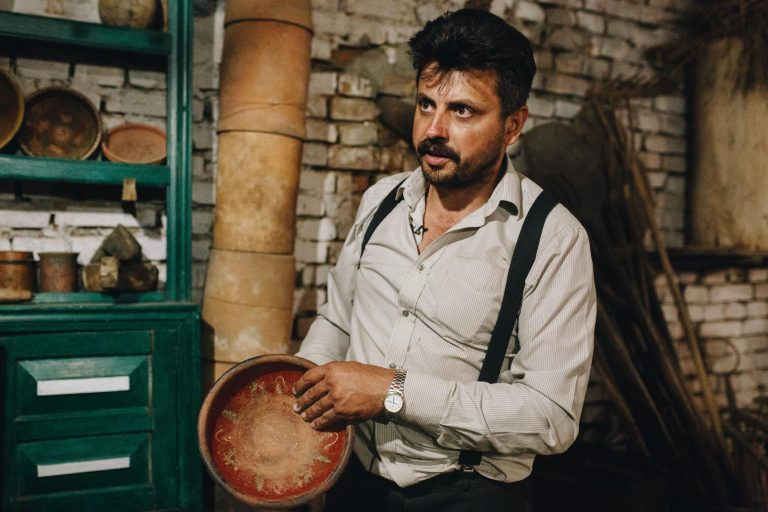
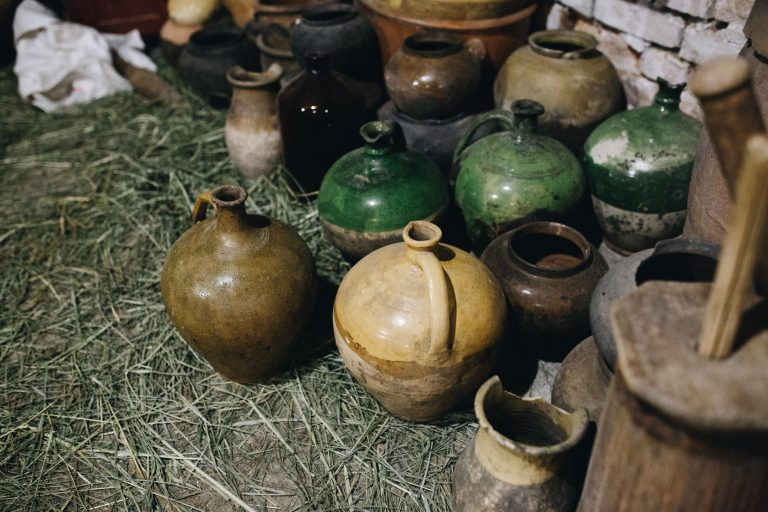
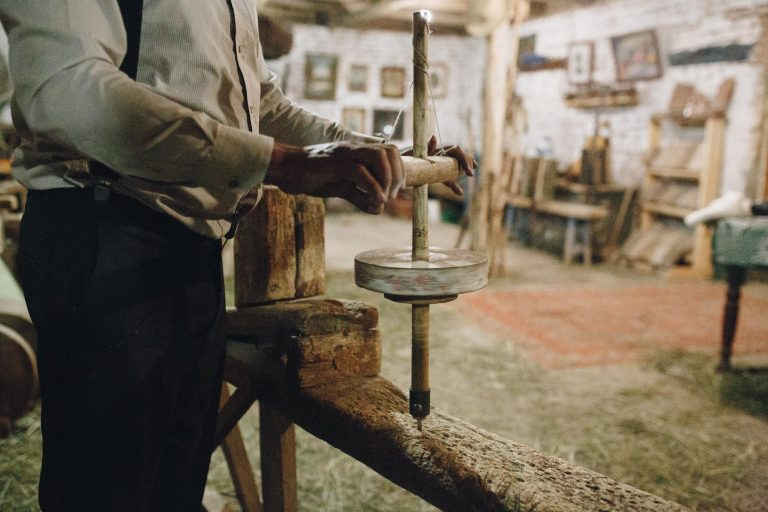
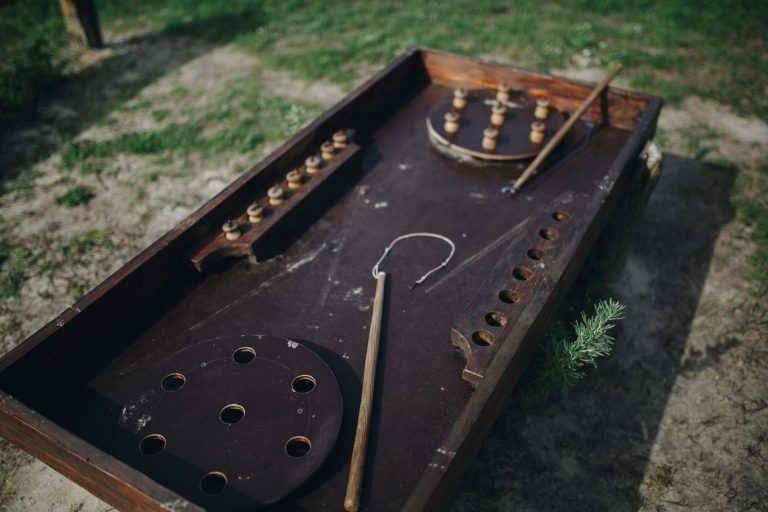
slideshow
Showing the Cossack pipe, the owner of the museum describes Cossack smoking traditions.
— There is a saying that a Cossack without a pipe is not a Cossack. Why do you think the Cossacks needed to smoke? Without smoking, a Cossack would die. In the time of the Grand Duchy of Lithuania, Cherkasy’s leader Astafiy Dashkevych traveled to Lithuania and brought back a new class of unprecedented weapons: heavy muskets. So how do you load and fire a musket? The smouldering match-cord is inserted, set on fire and you aim at your enemy. How would you set that smouldering cord on fire? There are no matches, no lighters, only a pipe. By using their pipe, they set the wick on fire and fired the musket. And so the pipe became an integral characteristic of the Cossacks.
Among the military items Nazar boasts of is a shaft – a wooden spear-edged pole to which the Cossack gonfalon (flag) was attached. The museum also presents the Ukrainian luxuries of the late 19th – mid-20th centuries, such as a record player, one of the first refrigerators to have a thermostat – a metal box with a place for ice, and a rotator – an early prototype of the modern printer.

Ancient crafts
Grainland doesn’t just house an ethnographic museum, it also has a smithy, an inkwell shop, a rag doll workshop, a weaving workshop, a papermill and a pottery. All the workshops operate only during excursion tours. Nazar says that the craftsmen who work at Grainland are the local residents. Most of them already have the experience in the craft they present at Grainland that is passed over generations.
After visiting the museum, the visitors are invited to go to the smithy, where a blacksmith Leonid Filonenko usually works on the decorative trinkets and small things: he heats the metal in the furnace and then knocks it into the desired shape on the anvil with a hammer. The smithy, which has been operating for two years, was made possible after Nazar came across old bellows, a device for pumping air into a furnace, in his searches around the village. Nazar explains that it was a truly rare discovery, particularly since it was still in good condition. Its age is difficult to estimate, but it could be more than a hundred years old.
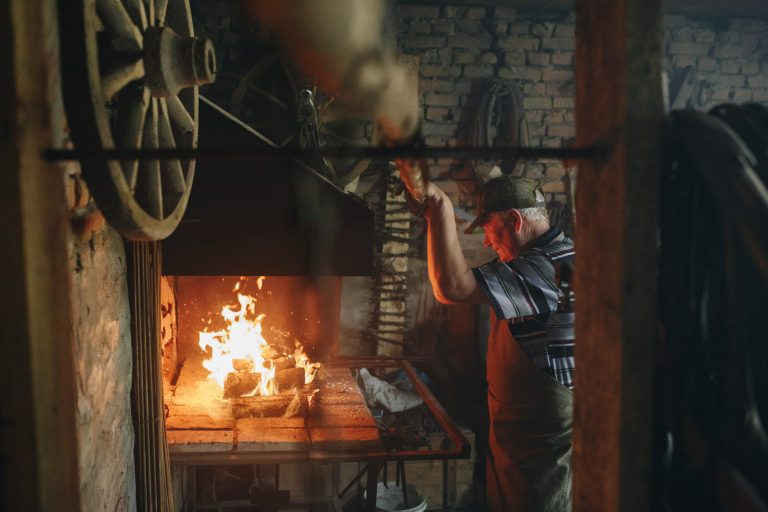
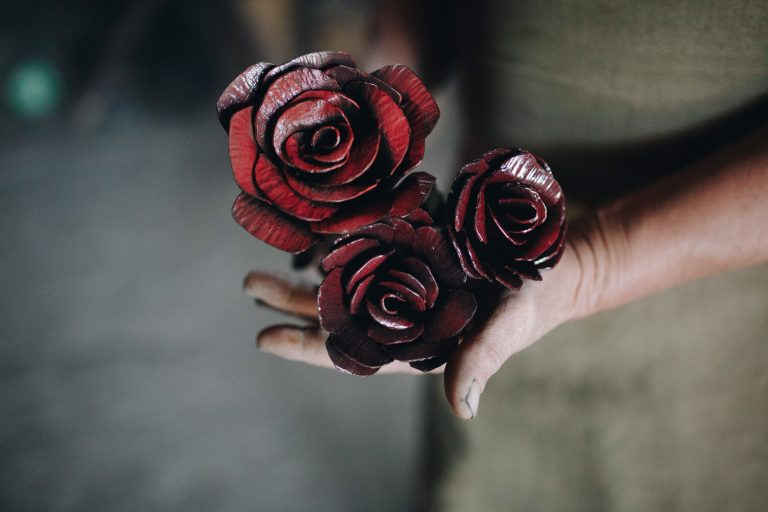
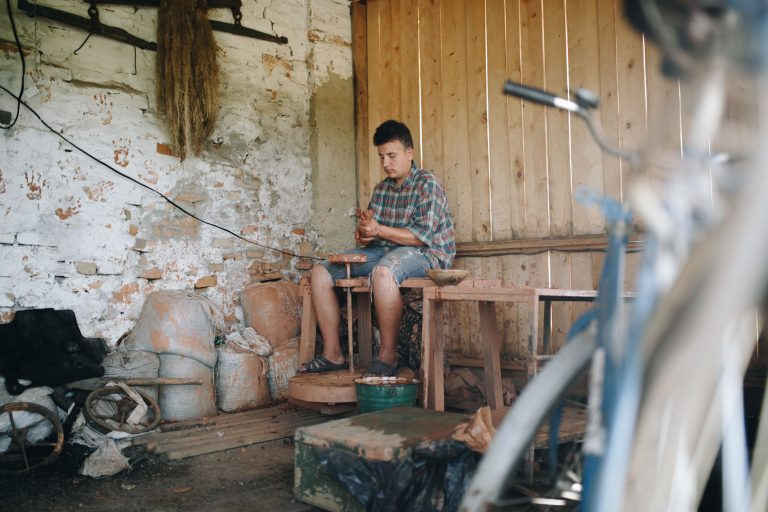
slideshow
In addition to working with metals, the blacksmith loves to give children various riddles, talk about the history of the Ukrainian peasant life and highlight various objects that were indispensable to their earlier lifestyles.
At the papermill you can also see how paper was made of nettle in the past. At the workshop people can learn how to work with clay. A potter Vladyslav Chub says that he learned the craft from a local resident and another potter from a neighboring village. Vladyslav also organizes excursions to Semydubova Mountain, teaches how to walk on stilts or shoot a bow.

This isn’t all that the thematic village offers. Outside you can also ride donkeys and horses: the stallion Hutsul and mare Jasmine are always at the service of visitors. People can also opt to go on a wagon ride on either a two-wheeled cart or even a chariot. They may also go mushroom picking, shoot a pneumatic rifle, stroll in the company of a stork Busia or just admire the nature surrounding the complex.
Two-wheeled cart and chariot
Two-wheeled cart - a carriage with two high wheels. Chariot - a lightweight four-wheeled carriage with folding top.The owner of Grainland has approached the project with incredible love for visitors, in particular children. He is worried that nowadays kids mostly know only an urban lifestyle and are not able to engage in the rural activities and entertainment.

Furthermore, in 2014, working on the museum’s exhibit collections saved Nazar from sinking into despair since he did not go off to war.
-I think I would be a bad soldier. I did not go to war, but we are fighting here, as they say, in the rear. Our war is not simple; it is concerned with the souls of the Ukrainians.

